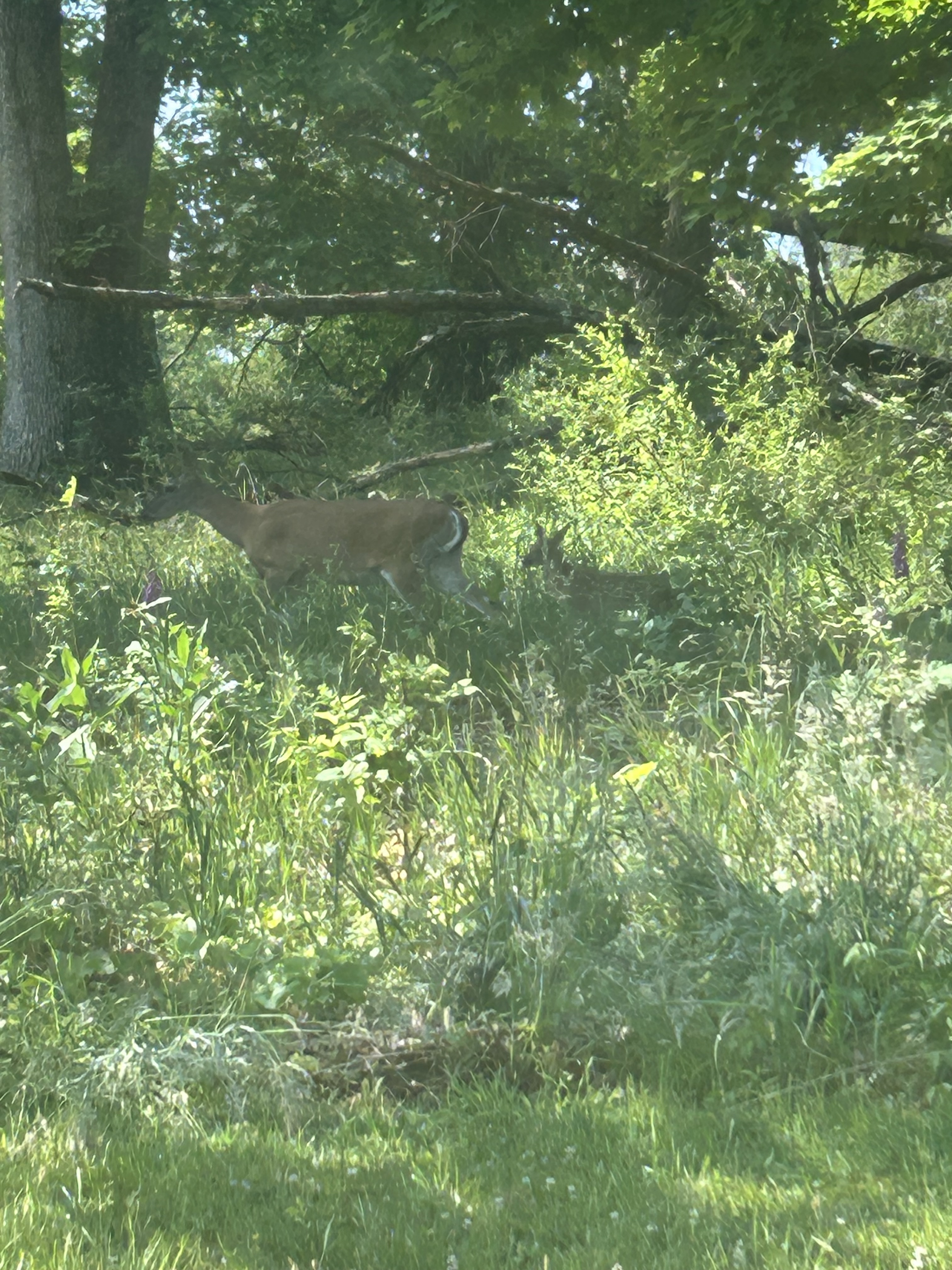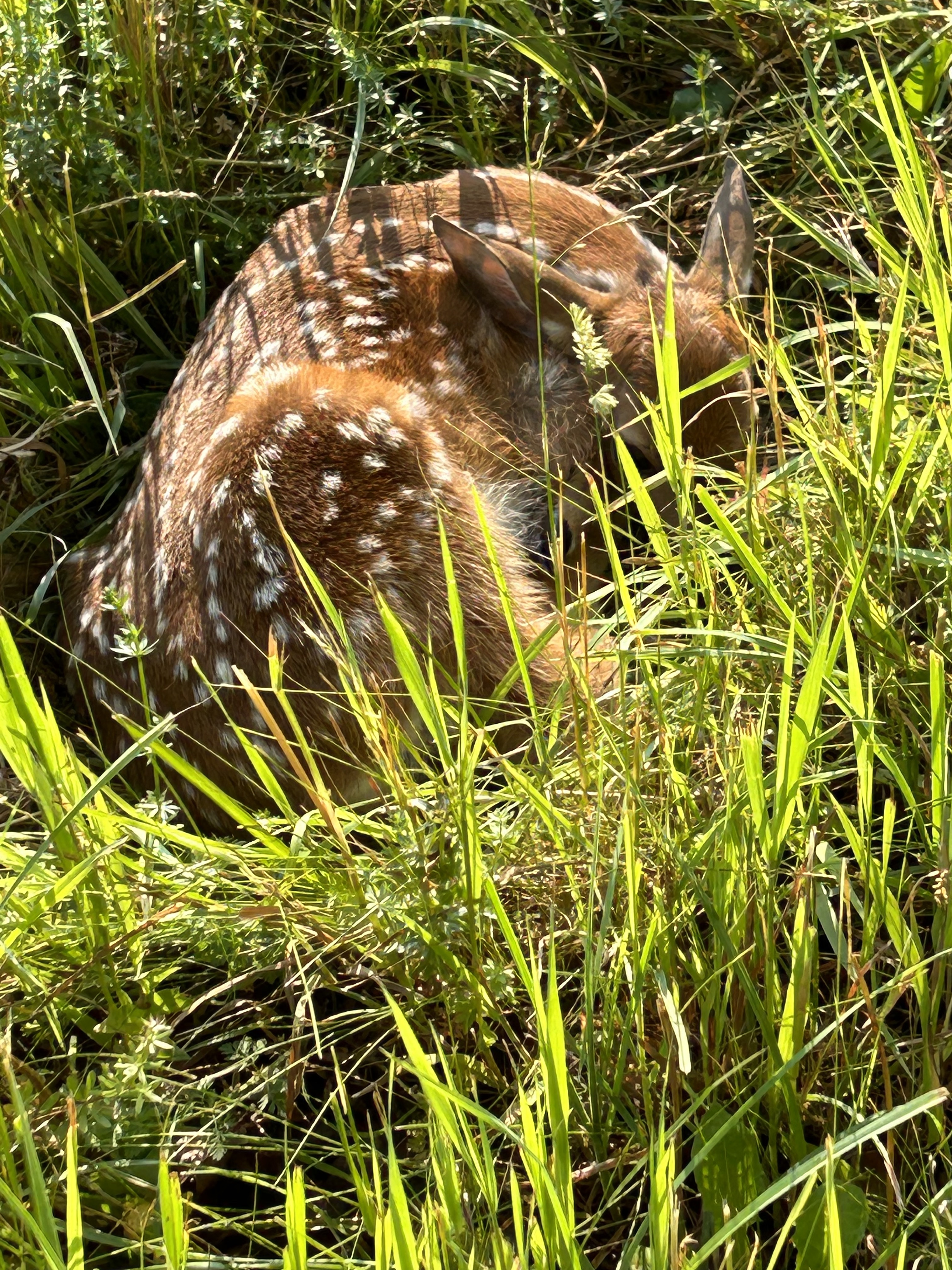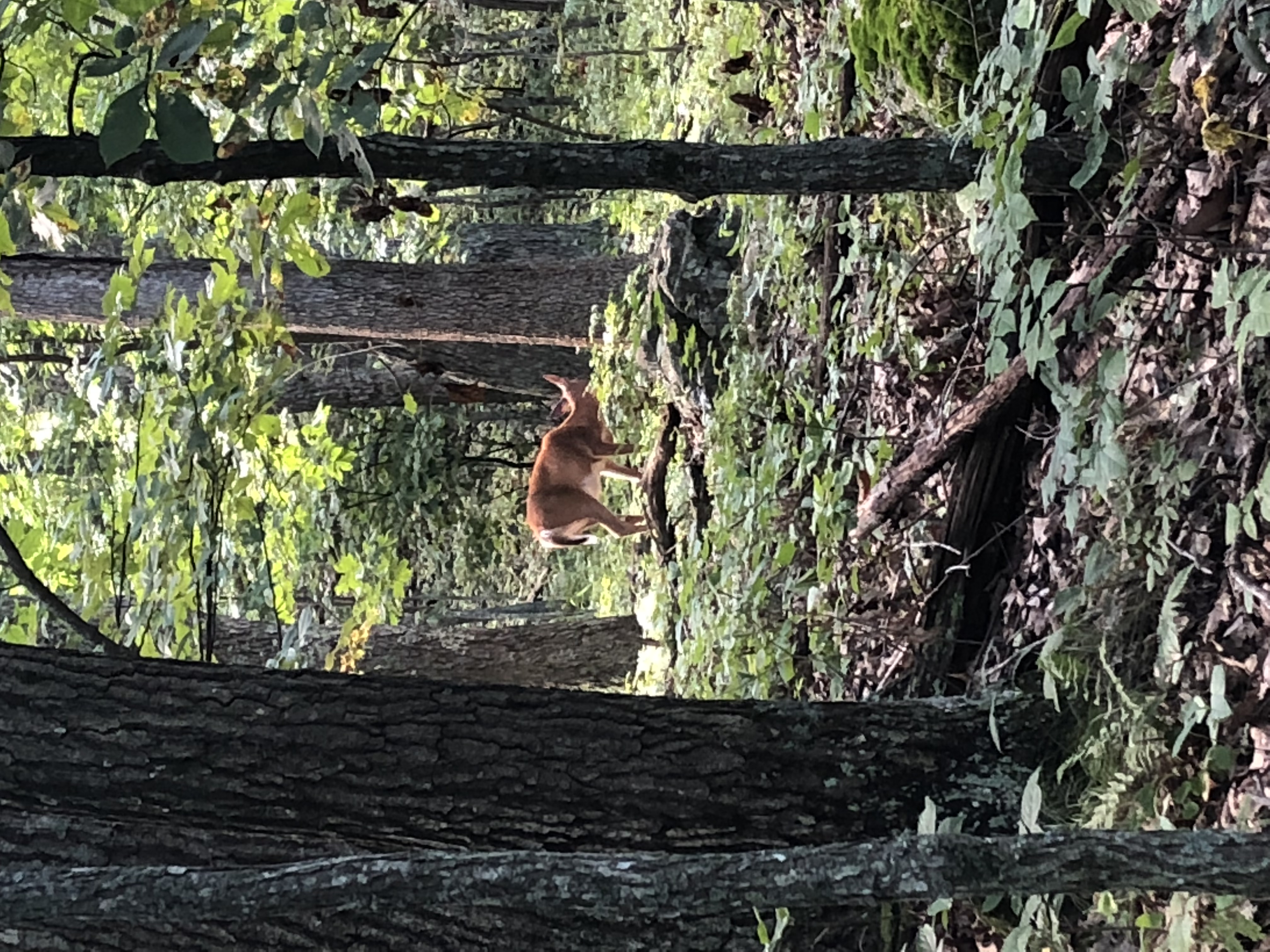It’s mid-May and there are already fawns on the ground. We are working our way up to the peak of fawn drop at the end of the month. We’ve talked a lot about fawn survival on this blog. Of course, most of the discussion revolves around the monstrous predators stealing babies from their forest beds. Yes, the previous sentence is dripping with sarcasm.
Predators are the party driving these interactions. Without them, fawns would live blissful lives without care or worry. This is untrue but decades of bad press are hard to shake. Kind of like female’s “passive” role in reproduction. This also is untrue and if I get Duane to agree, maybe I’ll write a post about that someday.
Does are yet again not given enough credit. Shocking. They play an active role in the survival of their fawn. And I’m just not talking about feeding and changing diapers.

White-tailed deer fawns are hiders. They use the armor of concealment to protect them when mom isn’t actively caring for them. They need protection because they are tasty and bears, coyotes, and bobcats need to eat so they can feed their own babies.
Decisions of where and when to hide are made by fawns but the conditions surrounding these decisions are linked to many things. Predation risk and habitat are 2 big ones. Predation risk is easy – fawns and does want the lowest risk possible to maximize survival.
Habitat can be 2-fold – it offers places to hide and provides does with the nutrition they need to support a growing fawn(s). The faster they grow, the better the chance of survival. If mom needs to range too far from her fawn, she might miss detecting a predator. If she is too close, she might give her fawn’s location away.

That’s the “where” part but the “when” also matters. When a fawn hides and when its active also plays into predation risk.
Who knew hiding could be so complicated!
Several studies were recently published looking at the role of maternal behavior in fawn survival. For neonatal mule deer, hiding was greatest at night, and they were more likely to hide in short vegetation. This last part seems counterintuitive but remember mom needs to see the coyote so she can open up a can of whoop a$$. If the grass is too tall, she can’t see what’s coming.

Hiding at night is a good idea because that’s when predators are most active. During this period, mule deer fawns were more likely to hide and were farther away from mom. In fact, another study on white-tailed deer found that fawn survival decreased as the proportion of nighttime visits by mom increased. Maternal behavior directly influenced fawn survival. Maternal behavior can be altered by various activities. So before you start crucifying coyotes, bears and bobcats, ask yourself if there is anything you are doing to make it difficult for a doe to visit her fawn during the day.
Another way doe behavior can influence fawn survival is through movement. In Delaware where fawns live without predators, younger females move more than older females during lactation. Younger females (<4 years old) had greater postpartum displacements than older females expending more energy to find food or avoid aggressive interactions with more socially dominant females. Fawns of younger females had reduced survival rates compared to older females. Emaciation was the most common cause of fawn mortality even though birth weights were the same for both groups.

Younger females are still growing. Add to this the energetic burdens of lactation and increased movement and there just isn’t time to get enough to eat to support themselves and their fawns.
If you throw people and predators into the mix, a mom has her hands full.
Whether a fawn lives or dies is not based solely on a predator’s ability to find a fawn. There are many players on the field, and no one plays alone.
–Jeannine Fleegle
Wildlife Biologist
PA Game Commission
*If you are a first-time commenter on the blog, your post will not appear until it has been approved by the moderator. This is to prevent spam overwhelming us. If you do not see your post within 24 hours, please email us at deerforeststudy@gmail.com